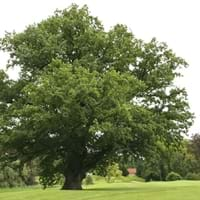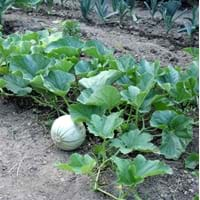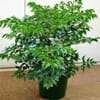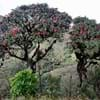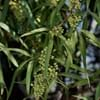Life Span
Perennial
Annual
Origin
Europe, Eastern Europe, Northern Europe, Southern Europe, Western Europe, Russia/Siberia, Northern Africa, Western Asia
Hybrid origin, Africa
Types
Not Available
Not Available
Habitat
Open Forest, open Woodlands, Temperate Regions
along watercourse, Banks, Barren waste areas
USDA Hardiness Zone
3-8
Not Available
Sunset Zone
A2, A3, 1a, 1b, 2a, 2b, 3a, 3b, 4, 5, 6, 7, 8, 9, 10, 11, 12, 14, 15, 16, 17, 18, 19, 20, 21
2a, 2b, 3a, 3b, 4, 5, 6, 7, 8, 9, 10, 11, 12, 13, 14, 15, 16, 17, 18, 19, 20, 21, 22, 23, 24
Habit
Oval or Rounded
Prostrate/Trailing
Flower Color
Red, Light Green
Yellow
Flower Color Modifier
Bicolor
Bicolor
Fruit Color
Brown
Green, Yellow green
Leaf Color in Spring
Green, Light Green
Green
Leaf Color in Summer
Dark Green
Green
Leaf Color in Fall
Yellow, Brown
Green, Yellow green
Leaf Color in Winter
Not Available
Light Green
Leaf Shape
Lobed
Heart-shaped
Plant Season
Spring, Summer, Fall
Summer, Fall
Sunlight
Full Sun, Partial Sun
Full Sun
Growth Rate
Slow
Very Fast
Type of Soil
Clay, Loam, Sand
Loam
The pH of Soil
Acidic, Neutral, Alkaline
Neutral
Soil Drainage
Average
Well drained
Bloom Time
Spring, Late Spring
Early Summer, Summer, Indeterminate
Tolerances
Pollution, Drought
Drought
Where to Plant?
Ground
Ground
How to Plant?
Seedlings, Stem Planting, Transplanting
Seedlings
Plant Maintenance
Medium
Medium
Watering Requirements
Average Water Needs, Do Not over Water, Keep ground moist, Never Over-water, Requires watering in the growing season, Water less during winter
Reduce watering once fruit are growing, Water in the early morning hours
In Summer
Lots of watering
Lots of watering
In Spring
Moderate
Moderate
In Winter
Average Water
Average Water
Soil pH
Acidic, Neutral, Alkaline
Neutral
Soil Type
Clay, Loam, Sand
Loam
Soil Drainage Capacity
Average
Well drained
Sun Exposure
Full Sun, Partial Sun
Full Sun
Pruning
Remove damaged leaves, Remove dead branches, Remove dead leaves
Remove damaged leaves, Remove dead branches, Remove dead leaves
Fertilizers
fertilize in growing season
All-Purpose Liquid Fertilizer
Pests and Diseases
Decline, Powdery mildew, Spider mites
Aphids, Cucumber beetles, Fusarium wilt
Plant Tolerance
Drought, Salt
Drought
Flowers
Insignificant
Showy
Flower Petal Number
Not Available
Single
Foliage Texture
Coarse
Coarse
Foliage Sheen
Glossy
Matte
Allergy
no allergic reactions
Dizziness, Mouth itching, Nausea
Aesthetic Uses
Landscape Designing
Not Used For Aesthetic Purpose
Beauty Benefits
Not Available
Good for skin, Hair Conditioner, Stops hair loss
Environmental Uses
Absorbs greenhouse gases, Air purification, Amazing growth rate, Food for birds, Food for insects, Nesting sites for birds, Prevent Soil Erosion, Shadow Tree
Air purification
Medicinal Uses
Nutrients
Antitussive, Digestive, Diuretic, Emetic, Febrifuge, Stomachic
Part of Plant Used
Bark, Seeds, Stem, Tree trunks
Fruits, Seeds
Other Uses
Economic Purpose, Used in construction, Used in pulpwood and lumber production
For making oil for cosmetics
Used As Indoor Plant
No
No
Used As Outdoor Plant
Yes
Yes
Garden Design
Feature Plant, Shade Trees
Edible, Fruit / Fruit Tree, Herb / Vegetable, Vine
Botanical Name
QUERCUS robur
CUCUMIS melo 'Burpees Early Hybrid'
Common Name
English Oak
Crenshaw Melon
In Hindi
अंग्रेजी ओक
खरबूजा
In German
Englisch Oak
Zuckermelone
In French
Chêne pédonculé
Melon
In Spanish
Inglés Roble
Crenshaw Melon
In Greek
Αγγλικά Oak
Crenshaw Melon
In Portuguese
Αγγλικά Oak
Crenshaw Melon
In Polish
dąb szypułkowy
Crenshaw Melon
In Latin
Oak Łacina
Crenshaw Melon
Phylum
Magnoliophyta
Magnoliophyta
Class
Magnoliopsida
Magnoliopsida
Order
Fagales
Cucurbitales
Family
Fagaceae
Cucurbitaceae
Clade
Angiosperms, Eudicots, Rosids
Angiosperms, Eudicots, Rosids
Tribe
Not Available
Not Available
Subfamily
Not Available
Not Available
Number of Species
Not Available
Not Available
Season and Care of English Oak and Crenshaw Melon
Season and care of English Oak and Crenshaw Melon is important to know. While considering everything about English Oak and Crenshaw Melon Care, growing season is an essential factor. English Oak season is Spring, Summer and Fall and Crenshaw Melon season is Spring, Summer and Fall. The type of soil for English Oak is Clay, Loam, Sand and for Crenshaw Melon is Loam while the PH of soil for English Oak is Acidic, Neutral, Alkaline and for Crenshaw Melon is Neutral.
English Oak and Crenshaw Melon Physical Information
English Oak and Crenshaw Melon physical information is very important for comparison. English Oak height is 1,520.00 cm and width 1,830.00 cm whereas Crenshaw Melon height is 30.50 cm and width 120.00 cm. The color specification of English Oak and Crenshaw Melon are as follows:
English Oak flower color: Red and Light Green
English Oak leaf color: Green and Light Green
Crenshaw Melon flower color: Yellow
- Crenshaw Melon leaf color: Green
Care of English Oak and Crenshaw Melon
Care of English Oak and Crenshaw Melon include pruning, fertilizers, watering etc. English Oak pruning is done Remove damaged leaves, Remove dead branches and Remove dead leaves and Crenshaw Melon pruning is done Remove damaged leaves, Remove dead branches and Remove dead leaves. In summer English Oak needs Lots of watering and in winter, it needs Average Water. Whereas, in summer Crenshaw Melon needs Lots of watering and in winter, it needs Average Water.
